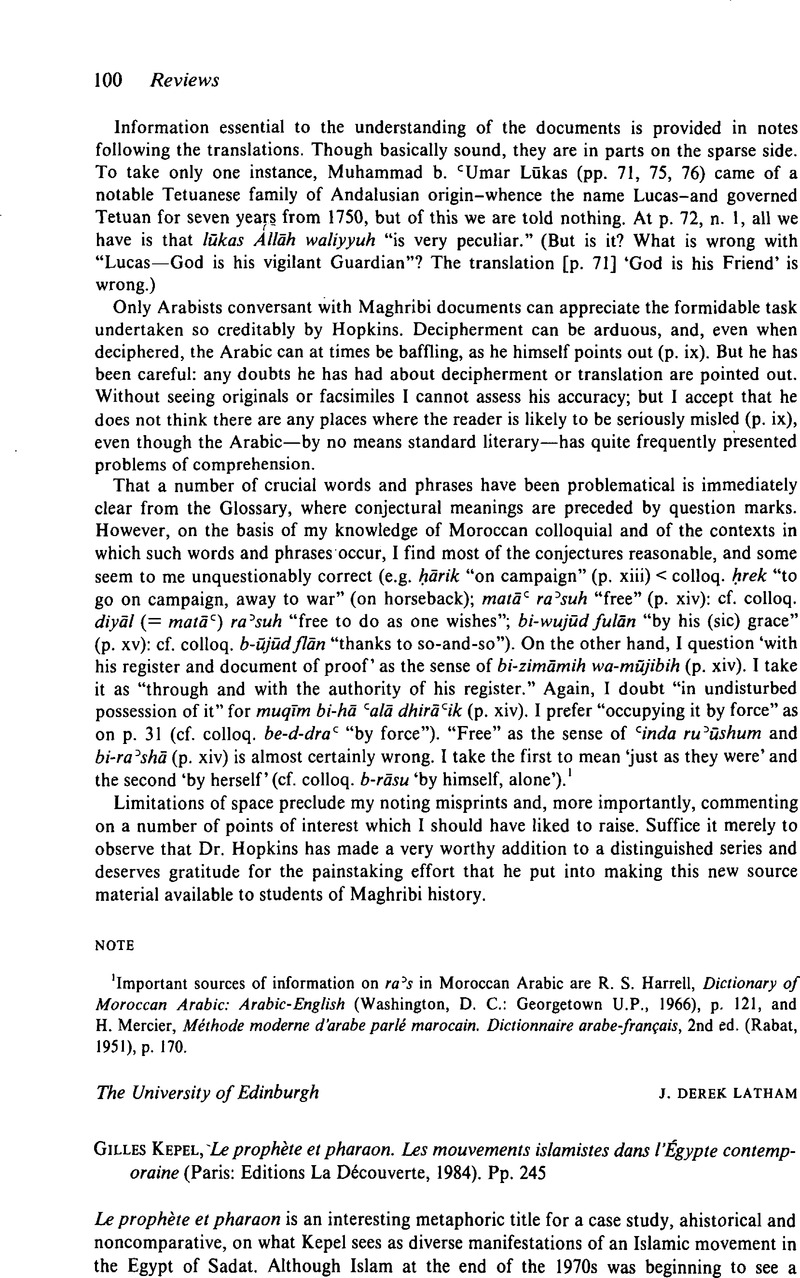No CrossRef data available.
Article contents
Gilles Kepel, Le prophète et pharaon. Les mouvements islamistes dans l'Égypte contemporaine (Paris: Editions La Découverte, 1984). Pp. 245
Published online by Cambridge University Press: 29 January 2009
Abstract

- Type
- Book Reviews
- Information
- Copyright
- Copyright © Cambridge University Press 1986
References
Notes
1 Among the works on resurgence are: Altman, I., “Islamic Movements in Egypt,” The Jerusalem Quarterly, 10 (Winter, 1979), 87–108;Google ScholarAyubi, N., “The Political Revival of Islam: The Case of Egypt,” International Journal of Middle East Studies 12(4) (12, 1980), 481–499;CrossRefGoogle ScholarDekmejian, R. H., “The Anatomy of Islamic Revival and the Search for Islamic Alternatives,” Middle East Journal, 34 (Winter, 1980), 1–12;Google ScholarDessouki, A. E., ed., Islamic Resurgence in the Arab World (New York, 1982);Google ScholarGuindi, F. El, “Religious Revival and Islamic Survival in Egypt,” International Insight 1(2) (05/06, 1980), 6–10;Google Scholar“Veiling Infitah with Muslim Ethic: Egypt's Contemporary Islamic Movement,” Social Problems 28(4) (04, 1981), 465–485;CrossRefGoogle Scholar“Is There an Islamic Alternative? The Case of Egypt's Contemporary Islamic Movement,” Middle East Insight 1(4) (07/08, 1981), 19–24;Google Scholar“The Emerging Islamic Order: The Case of Egypt's Contemporary Islamic Movement,” Journal of Arab Affairs 1(2) (04, 1982), 245–262.Google Scholar
2 As published research on Egypt's Islamic movement was beginning to appear there seemed to arise among observers some disagreement as to whether the movement's inception occurred following 1967 or following 1973. According to S. Ibrahim it began right after the 1967 war. See Ibrahim, S., “Anatomy of Egypt's Militant Islamic Groups: Methodological Note and Preliminary Findings,” International Journal of Middle East Studies, 12(4) (12, 1980), 425.Google Scholar I argued that the phenomenon referred to at that time, although religious, was not Islamic. For more detail on this point see El Guindi “Veiling Infitah ⃜”Kepel seems to be concurring that while revolutionary ideology developed in the 1960s the phenomena of Egypt's Islamic movement actually began in the 1970s.
3 See Haddad, Y. Y., “Sayyid Qutb: Ideologue of Islamic Revival,” in Esposito, J. L., ed., Voices of Resurgent Islam (New York, 1983), pp. 94–95, for the works by Qutb that are not included in Kepel.Google Scholar
4 Both references can be found in J. L. Esposito, ibid., Haddad, Y. Y., “Sayyid Qutb…”, pp. 67–98;Google ScholarVoll, J. O., “Renewal and Reform in Islamic History: Tajdid and Islah,” pp. 32–61.Google Scholar
5 In an article I argued that the university-based Islamic movement consists of two components: the associational in the form of al-Jama'āt al-Islamiyya and the non-associational core of college women and men who support al-Jama'āt but are not members, yet are in the Islamic movement. For elaboration on the movements' components see Guindi, El, “The Emerging Islamic Order …”, reprinted in Farah, Tawfik, ed., Political Behavior in the Arab States (Boulder, Colorado, 1983), pp. 55–65.Google Scholar
6 This androcentrism marks most of the works on the Islamic movement. One exception is the article by Williams, J. A., “A Return to the Veil in Egypt,” Middle East Review, 11(3) (Spring 1978), 49–55.Google Scholar For a discussion on the assertiveness of women in the movement and their role see Guindi, El, “Veiled Activism: Egyptian Women in the Islamic Movement,” Peuples Méditerraneacute;ens, 22–23 (01/06, 1983), 79–89,Google Scholar reprinted in Egypt Then and Now 2(4) (Winter/Spring, 1984), 21–25.Google Scholar




